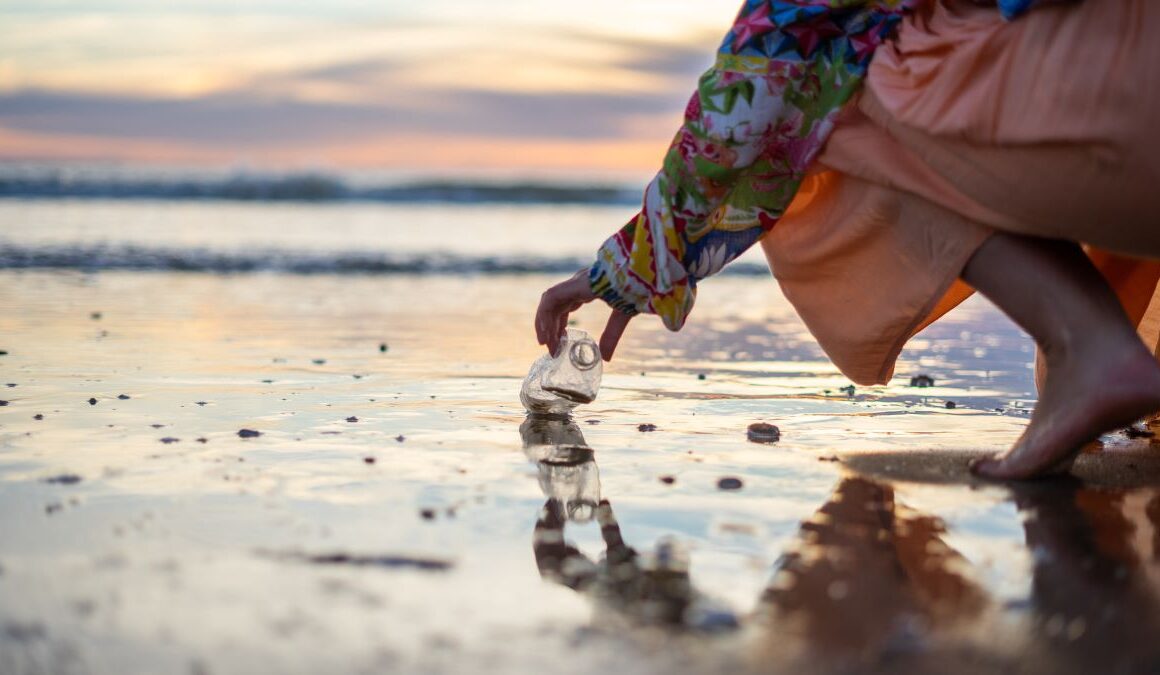Investing in a Post-Plastic World
Making the switch to a green economy will affect every aspect of our lives. As Kathleen Rogers, president and CEO of EarthDay.org recently told Earth911, “We have a chance to completely rethink everything, from what we’re eating, to what we’re wearing, to what we’re sitting on, to our buildings and cars, everything.” In fact, just eliminating plastic will involve that level of change. Plastic is so ubiquitous in our lives – from the packaging protecting our vegetables to the fleece sweatshirts on our backs – that it’s hard to imagine how we would live without it. But if we want to stop climate change, we have to achieve a post-plastic world.
The Problems With Plastic
Just like electricity, plastic is made from natural gas. Between 4% and 8% of global oil consumption is related to plastics. Fossil fuel extraction generates tremendous greenhouse gas emissions. In 2015, emissions from plastics manufacturing released as much GHG as 45 million passenger vehicles.
That same year, U.S. emissions from plastics incineration were 5.9 million metric tons of CO2-eq. That’s an environmental justice problem since incinerators are disproportionately located near impoverished communities and communities of color. Even more unjust, in places without adequate waste processing, plastic is often burned in the open, where it releases a cocktail of poisonous chemicals including “black carbon,” a pollutant with global warming potential 5,000 times higher than carbon.
When people don’t burn or landfill it, plastic frequently makes its way into waterways and oceans. There, it poses a serious pollution problem forming massive garbage gyres and directly harming sea life. Plastic does not biodegrade, but sunlight and heat do cause it to release greenhouse gases methane and ethylene as it breaks down into microscopic particles that enter the food chain and bioaccumulate. Studies have found plastic in seafood. Bioaccumulation is not the only source of plastic in the human diet; people are eating plastic directly from packaging like water bottles, too. Because microplastics are a new problem, scientists haven’t had time to perform long-term studies on them. As a result, no one knows what their long-term impacts on human health will be.

Plastic-Free Living
Plastic-free lifestyles are something of a fringe trend in the environmental movement. Few people have the dedication and resources to reorder their lives around eliminating plastic. But those few people, like Beth Terry, inspire the rest of us to reduce our plastic waste as much as possible. Plastic Free July is a month-long challenge that encourages people to reduce their plastic use. And EarthDay.org has a year-round campaign to end plastic pollution.
“We eat the equivalent of a plastic credit card probably once a month. It’s everywhere in our bodies,” says Rogers. “Finally, two relatively small countries, Rwanda and Peru, got together and now have 53 countries signed onto the beginnings of what I hope will be a global plastics treaty which we are really focused on.” (Since this interview, the treaty was adopted by the U.N. with the ambition of completing a global legally binding draft agreement by the end of 2024.)
“The other thing we’re focused on – and this is part of plastics because there’s so much in our of it in our clothes – is the incredible impact of fast fashion,” says Rogers.
Individuals can do their part by supporting sustainable brands and avoiding fast fashion. Consumers can choose repurposed furniture and other upcycled items, from ornaments to light fixtures. We can get better at eliminating our own plastic waste – especially single-use plastics like grocery bags, water bottles, and plastic cutlery. To be more hands-on, you can also join in the Great Global Cleanup to help remove waste plastic from the environment. Let your elected representatives know that you support them in pushing for a strong final draft of the plastics treaty and you support the Break Free From Plastic Pollution Act.
Post-Plastic Products
But for now, even construction materials and furniture contain plastics. Most people will not be able to go plastic-free until there are convenient alternatives to plastic in all of the products we need. If you are a scientist, engineer, or inventor, you can turn your attention to developing some of those options. But the rest of us can do our part by supporting innovation when we find it. Keep an eye out for emergent technologies that provide the same benefits as plastic without the ecological drawbacks. There are a lot of promising developments in bioplastics, which are starting to replace some beverage bottles. Some mushroom and plant-based leathers are beginning to replace vinyl in clothing. Mushrooms are also being used to make packaging and even insulation. The options for a post-plastic world are growing every day.


